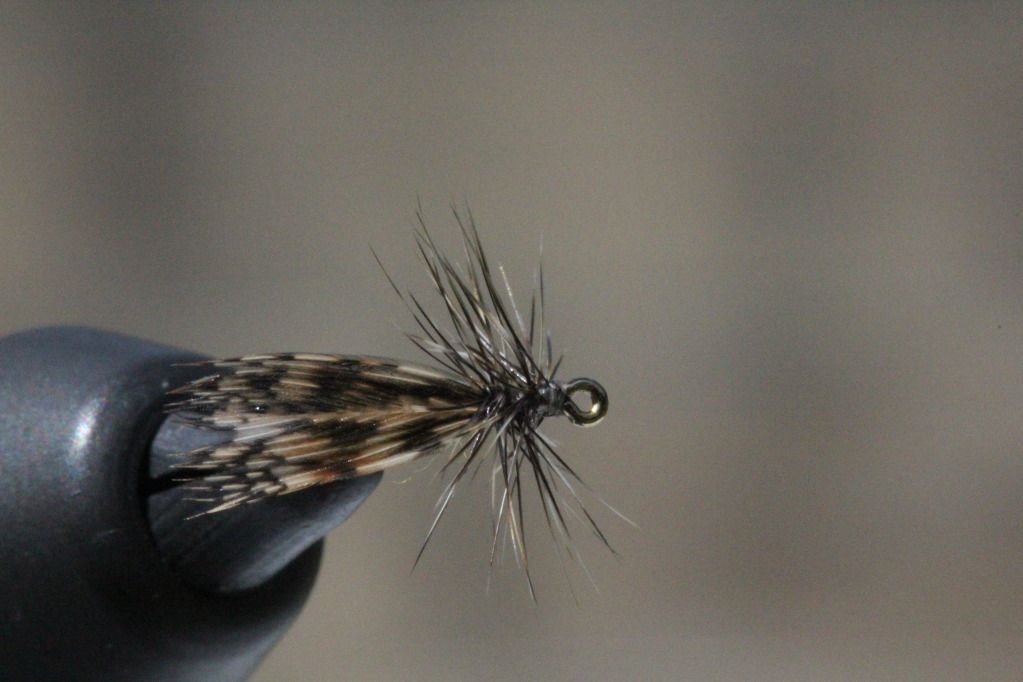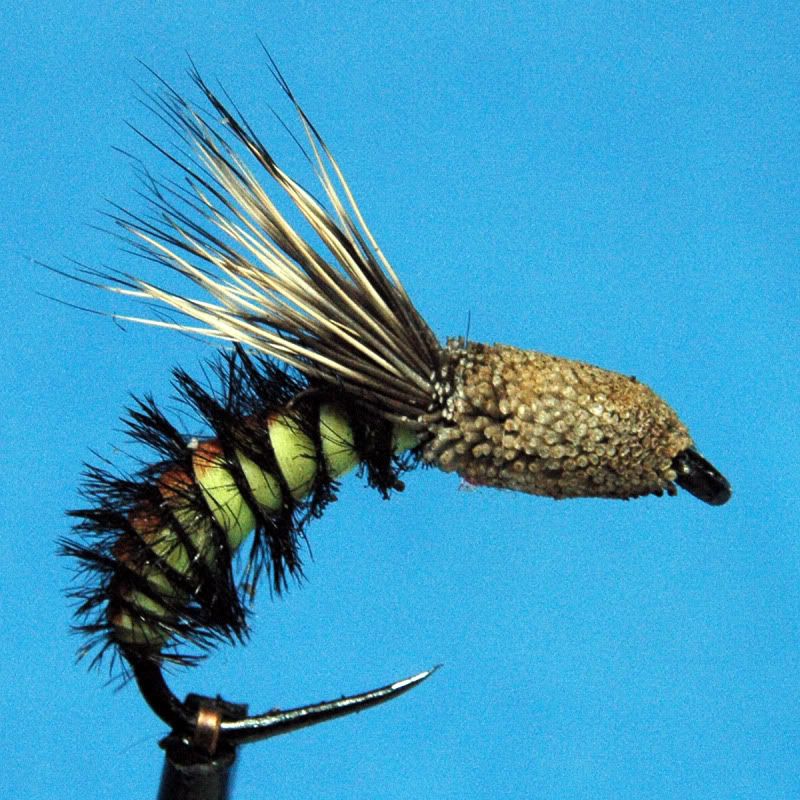Hi,
The entomologist and hatch watchers have agreed on the following:
1. Trout rarely take caddis flies as they hatch on the surface. The emerging caddis takes off almost immediately, thus not allowing the trout a chance to take the adult before it flies off. What we usually see are splashy rises as the trout chases the emerger to the surface.
2. The swarming of caddis over and around the water are mating swarms and the males fly off to die in the brush or weeds or trees.
3. The female does return to lay eggs on the water or to dive through the surface to deposit their eggs near or on the bottom.
So, the adult caddis insect which is on the surface long enough for the trout to take them are spent female caddis.
Anyway, I agree with all this from my observations. And, I believe the spent caddis style is the fly for such spent adult females.
Reverse tapered body
Partridge feather for overwing
Hackled at collar
Hackle trimmed flat at bottom for low riding






 Reply With Quote
Reply With Quote


